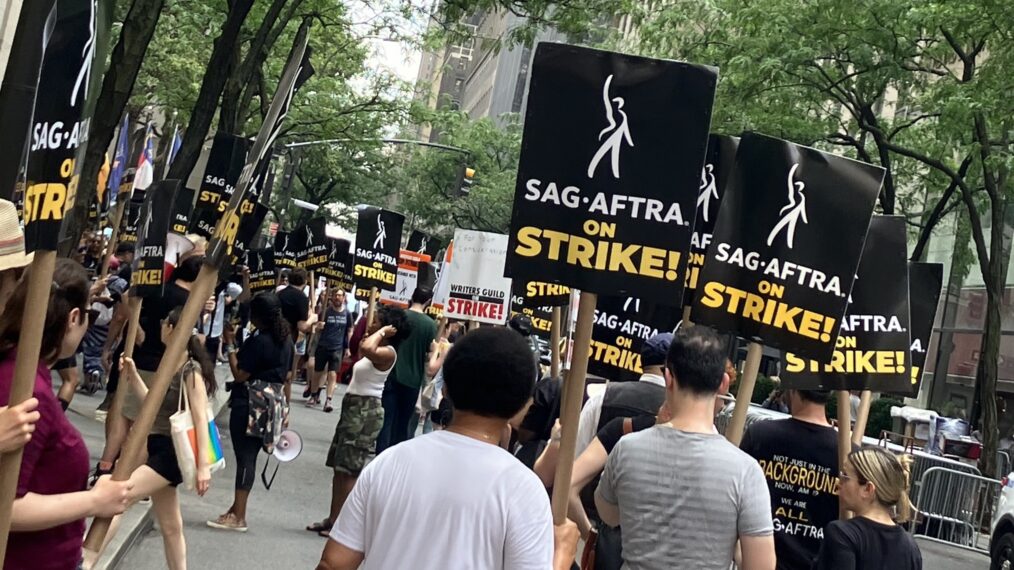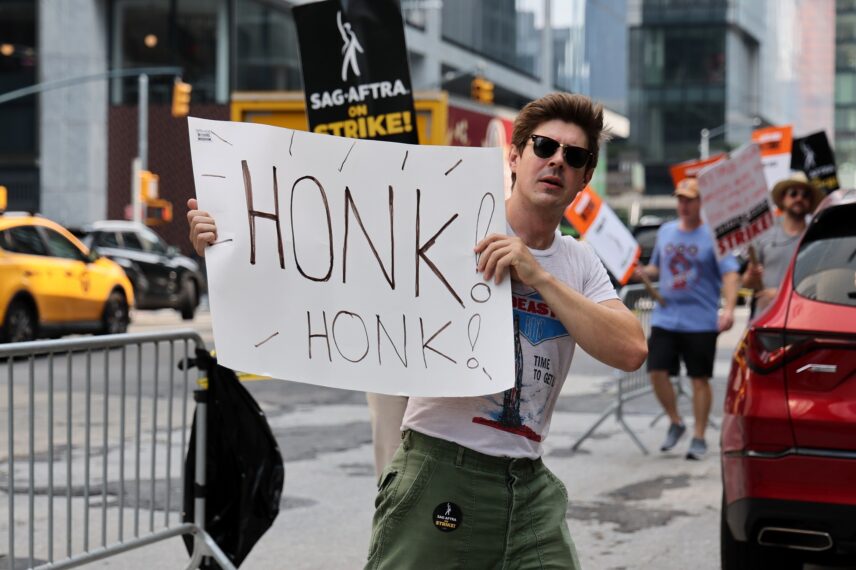Actors Strike Explained: Why It’s Happening & How It Affects Viewers

The SAG-AFTRA strike is in full swing and some viewers may be questioning the reason behind it.
Along with the WGA strike (which started in May), the actors strike puts ongoing projects on hold in an even bigger way, essentially postponing all work behind the scenes without performers around to film scenes previously written by struck writers. We’re breaking down all the need-to-know details, below.
What Do Actors Want?
Performers who are part of SAG-AFTRA are seeking a wage increase to reflect current inflation and the protection of their images and likeness to prevent AI replacement. Additionally, they’d like consultations with qualified hair and makeup professionals to ensure equity on set as well as a residual model for work on streaming series.
They’d also like raised contribution caps to ensure health and pension plans, permission to work during hiatuses so they’re not held back by uncertain timelines, and to have relocation costs properly covered for performers who work away from home.

(Credit: Dia Dipasupil/Getty Images)
Does It Affect Viewers?
Changes may not be immediately obvious to viewers, but over time, content will become sparser and sparser as productions remain on hold (see our detailed list of disrupted productions here). Some networks have begun unveiling their fall schedules, which will include more unscripted content like game shows and reality competitions (like on Fox). CBS has opted to pull from its Paramount library to run the first season of Yellowstone and is set to air longer episodes of favorites like Survivor and The Amazing Race to supplement the gaps in its usual programming. They’ll also air episodes of the British version of Ghosts alongside re-runs of the American adaptation and from Paramount+ SEAL Team and FBI True.
Networks will have to come up with creative ways, as illustrated above, to fill in their schedule gaps, but streamers have the benefit of pre-filmed content that they release over time. Some shows like Only Murders in the Building on Hulu were filmed prior to the WGA and SAG-AFTRA strikes, allowing them to release on time. Once the pre-filmed shows are released though, it will take time before any new content is available if the metaphorical well runs dry before the strike is through.
And don’t expect any promotion as SAG-AFTRA members won’t be participating in any interviews, late-night appearances, or red carpets for the foreseeable future. It’s been decades since both SAG and WGA were on strike together, but what awaits viewers is akin to what TV was like during the beginning of the COVID-19 pandemic. Instead of talent participating in Zoom promotion though, there is no press occurring, and scripted shows fans typically enjoy when the fall season kicks off won’t be running.
Can Actors Work During the Strike?
No, actors aren’t allowed to take up any kind of work or support struck work through appearances, social media posts, or even podcasts. Some exceptions are being made for indie products made without big studios involved, but there is a fine line when it comes to the rules.
Does This Affect Reality TV Too?
No, unscripted work that doesn’t involve members of the WGA or SAG-AFTRA will continue to move forward such as Dancing with the Stars, The Masked Singer, and LEGO Masters.
Are the SAG-AFTRA and WGA Strikes Related?
Not technically. The unions are fighting for two different contracts, but their interests for better wages and protections align.
Has This Happened Before?
The last time SAG-AFTRA and WGA were on strike together was in 1960 when Ronald Reagan was the president of SAG.
When Do We Expect It’ll Be Over?
There is no timeline for the strike. It could end as early as the fall but could extend as far into the future as next year. Previously, the longest actors’ strike took place in 1980 and ran for just over three months. That doesn’t mean this strike will go on as long, but it could also go on longer. No one knows when the strike will end, so stay tuned for updates as they’re made available in the weeks to come.







